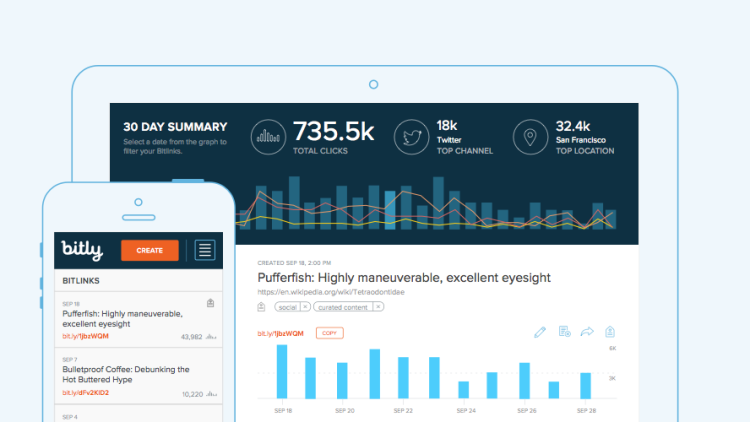Customer touch-points are multiplying, and so are engagement technologies. Join crack minds in marketing as they discuss how to adopt an effective omnichannel strategy that unifies the customer experience.
“The promise of technology is that it makes the world and life easier for marketers,” says Mark Josephson, CEO of Bitly. “In fact, it’s actually done the opposite.”
Marketers are now responsible for owning the entire customer journey and lifecycle from top-of-funnel awareness to acquisitions and lifetime value. And that means they need to touch the customer in every single channel.
The major roadblock, says Josephson, is that in a world where mobile dominates, three companies are making big bets on owning that consumer experience: Apple, Google, and Facebook. It’s the challenge that Bitly, historically known globally as a premiere URL-shortening service, has evolved to face, as it’s become a platform that allows marketers to leverage the link as an omnichannel marketing asset permitting measurement and analytics across channels.
Josephson, who says he’s passionate about giving marketers back control of the customer story will join a stellar panel who will dive into regaining ownership of the omnichannel journey.
It’s an ownership that’s being challenged, Josephson notes. Those three big players are leveraging tech innovations to build walled gardens, which makes it increasingly complicated for marketers to see clear across the internet and to own and maintain relationships with their customers.
“It is dramatically impacting marketers’ ability to own and control their story,” Josephson says, “and to own and control their customers’ journey.”
Marketers, he says, have an inherent need to be in control and have ownership of their activities and efforts. The proliferation and fragmentation of audiences and channels is creating a real dissonance for marketers as they lose control of the story and the ability to deliver the ideal customer experience.
“I think marketers largely are unaware of the potential impact of the moves that these companies are making to dis-intermediate them from owning their customer,” Josephson continues. “Marketers need to recognize that, and then take steps to be more proactive. They need to start shifting the power from the distribution platforms and back into their own hands.”
The easiest way to do that, Josephson says, is for marketers to build their own unified data strategy with the intent of owning the customer relationship across those channels. Silos need to be broken down completely, and data from across the enterprise needs to be aggregated, including teams that may not always work side by side, for example, the social, advertising, circulation, and acquisitions teams. Not surprisingly, Josephson has a particular interest in the role links play in an omnichannel strategy.
“Links are in every digital channel, whether you see them or not,” he says. “Every time you tap, click, or swipe, there’s a link there. The link is an elemental unit of digital marketing that can exist in all these channels and unite them all.”
To learn more about breaking down walled gardens and owning the omnichannel landscape, plus some of the biggest insights from VB’s Insight report, “Omnichannel trends: data, platforms, mobile, and commerce,” join our free webinar now.
Don’t miss out!
Access the webinar on demand here for free.
What you’ll learn in this webinar:
- Why today’s marketing automation solutions fall short of customer expectations
- How winning omnichannel marketing strategies balance push notifications, in-app messages, email, and social communications
- Why understanding users on a person level, and not device level, is critical in mobile
- Why “Marketing” is evolving to “Communicating” and how to prepare for that transition
Speakers:
Mark Josephson, CEO, Bitly
Sean Blankenship, CMO, Coldwell Banker
Heather Marie, CEO, Shoppable
Stewart Rogers, director of marketing technology, VentureBeat
Moderator:
Wendy Schuchart, moderator, VentureBeat
This webinar is sponsored by IBM Marketing Cloud.

